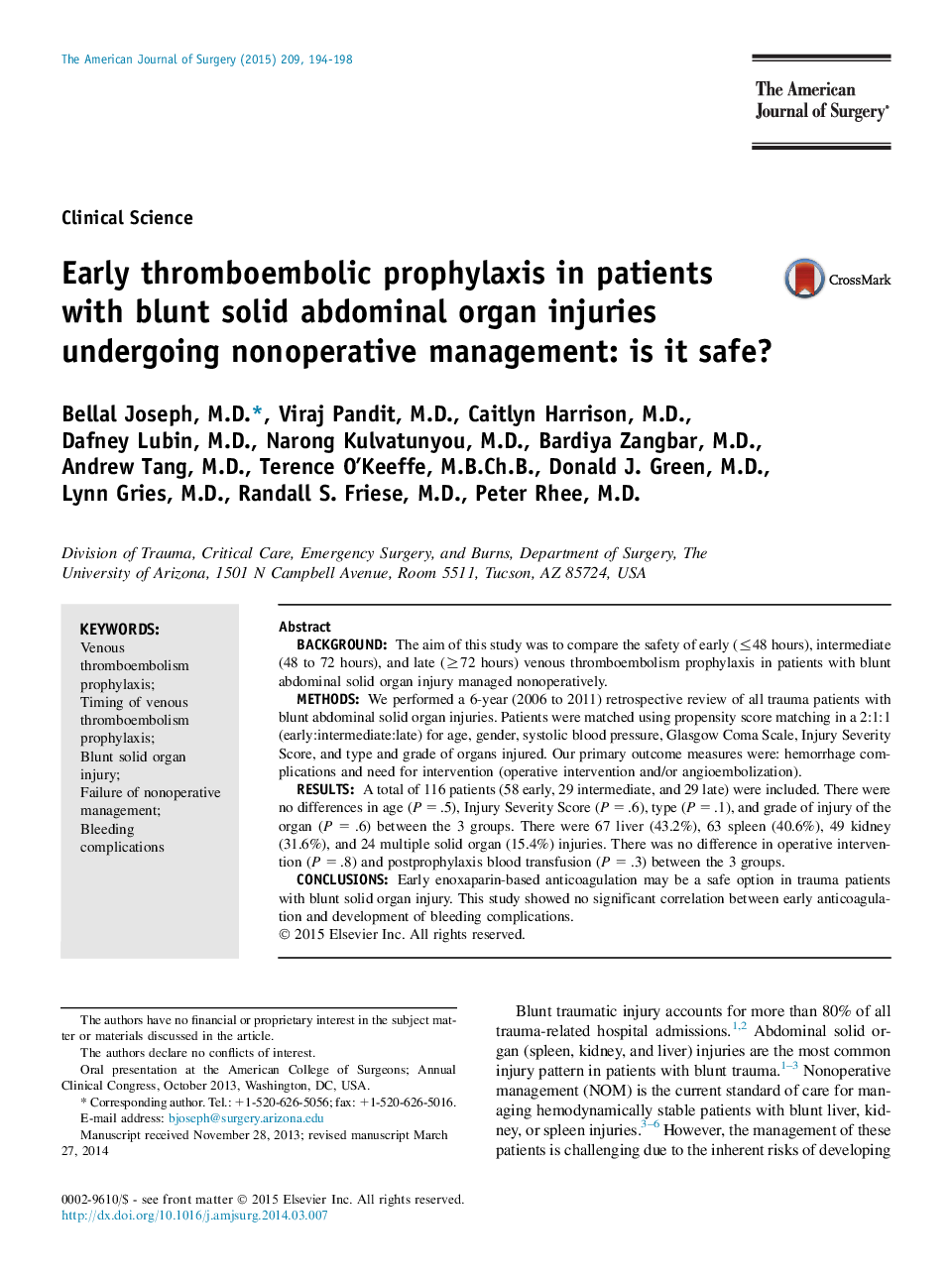| Article ID | Journal | Published Year | Pages | File Type |
|---|---|---|---|---|
| 4278375 | The American Journal of Surgery | 2015 | 5 Pages |
BackgroundThe aim of this study was to compare the safety of early (≤48 hours), intermediate (48 to 72 hours), and late (≥72 hours) venous thromboembolism prophylaxis in patients with blunt abdominal solid organ injury managed nonoperatively.MethodsWe performed a 6-year (2006 to 2011) retrospective review of all trauma patients with blunt abdominal solid organ injuries. Patients were matched using propensity score matching in a 2:1:1 (early:intermediate:late) for age, gender, systolic blood pressure, Glasgow Coma Scale, Injury Severity Score, and type and grade of organs injured. Our primary outcome measures were: hemorrhage complications and need for intervention (operative intervention and/or angioembolization).ResultsA total of 116 patients (58 early, 29 intermediate, and 29 late) were included. There were no differences in age (P = .5), Injury Severity Score (P = .6), type (P = .1), and grade of injury of the organ (P = .6) between the 3 groups. There were 67 liver (43.2%), 63 spleen (40.6%), 49 kidney (31.6%), and 24 multiple solid organ (15.4%) injuries. There was no difference in operative intervention (P = .8) and postprophylaxis blood transfusion (P = .3) between the 3 groups.ConclusionsEarly enoxaparin-based anticoagulation may be a safe option in trauma patients with blunt solid organ injury. This study showed no significant correlation between early anticoagulation and development of bleeding complications.
